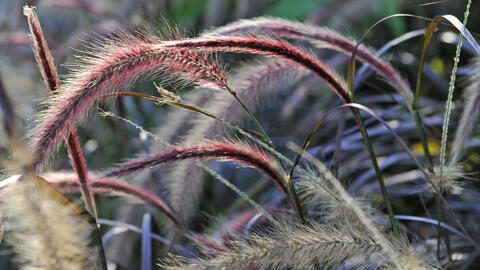EU: Crimson fountaingrass is not an invasive species
Crimson fountaingrass was considered a neophyte for a short while and was on the EU list of invasive species. But the European Union has now decided otherwise.

Crimson fountaingrass (Pennisetum setaceum ‘Rubrum’) is not an invasive species after all
Crimson fountaingrass (Pennisetum setaceum ‘Rubrum’) grows and thrives in many gardens. It plays an important horticultural role and has been sold and purchased millions of times. As the ornamental grass has never behaved invasively and in scientific circles is considered a distinct species within the Pennisetum genus, many people had spoken out against its inclusion on the EU list of invasive species from the outset. And they were right: Crimson fountaingrass is now officially not a neophyte.
Invasive species are nonindigenous species of plants and animals that affect native ecosystems or even displace other species as they spread. The European Union therefore drew up an EU list of invasive species, also known as the Union list, according to which the trading and cultivation of the species listed is legally prohibited. Crimson fountaingrass was added to the list last August.
However, the EU Member States Committee on Invasive Alien Species has now decided that crimson fountaingrass and its varieties should be assigned to the independent species Pennisetum advena. Therefore, crimson fountaingrass is not considered a neophyte after all and is not on the Union list.

Bertram Fleischer, General Secretary of the German Horticultural Association e.V. (ZVG) commented: "Pennisetum is an economically important plant. We welcome the clarification that Pennisetum advena ‘Rubrum’ is not an invasive species. This is good news for our businesses, but it is long overdue." The ZVG had already repeatedly referred the specialists at the EU to the scientific report produced by the American grass expert Dr. Joseph Wipff for the ZVG. The DNA analysis of Pennisetum setaceum and the varieties ‘Rubrum’, ‘Summer Samba’, ‘Sky Rocket’, ‘Fireworks’ and ‘Cherry Sparkler’, which was carried out in the Netherlands at the initiative of the national horticultural association, confirmed that crimson fountaingrass belongs to the species Pennisetum advena. Cultivation and distribution, as well as growing it in your own garden, is therefore not illegal and is still allowed.
